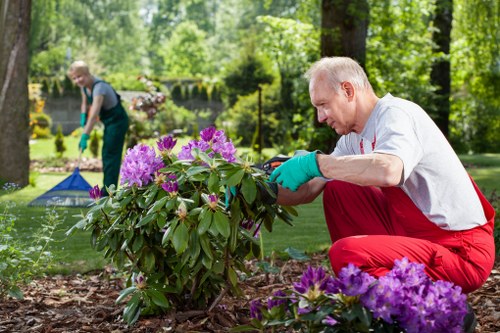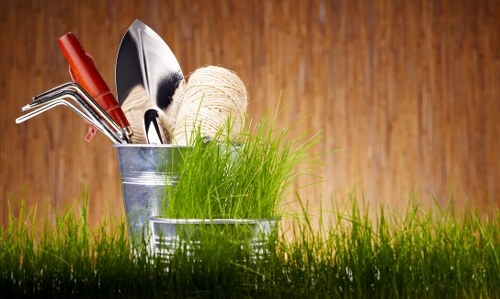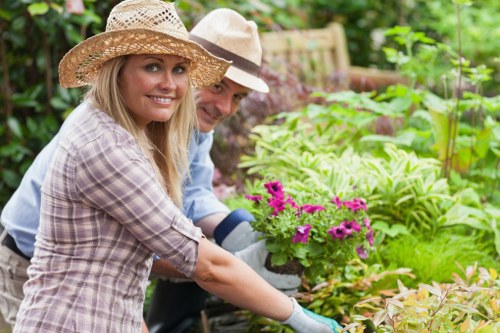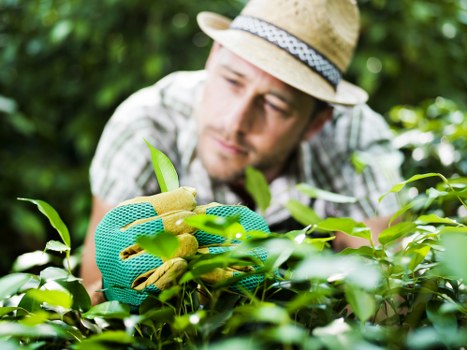Transforming Green Spaces: Landscape Gardening in Marylebone

Introduction to Landscape Gardening
Landscape gardening is an art and science that combines creativity with horticultural knowledge to create aesthetically pleasing and functional outdoor spaces. In Marylebone, a vibrant and historic area of London, landscape gardening plays a crucial role in enhancing both residential and commercial properties. Whether you’re looking to redesign your garden, add sustainable features, or simply maintain your green space, understanding the nuances of landscape gardening in Marylebone can help you achieve stunning results.
Marylebone is known for its charming streets, historic architecture, and a strong sense of community. These elements make it a unique location for landscape gardening. Gardeners here must consider the blend of traditional and modern styles, ensuring that their designs complement the surrounding environment. Additionally, the limited space often found in urban settings like Marylebone requires innovative solutions to maximize greenery without compromising on functionality.
The importance of landscape gardening extends beyond aesthetics. A well-designed garden can improve air quality, provide habitats for local wildlife, and even increase the value of your property. In Marylebone, where green spaces are treasured, investing in landscape gardening is both a personal and communal benefit.

Design Principles for Marylebone Gardens
Understanding the Local Climate
Marylebone enjoys a temperate climate with mild winters and warm summers, making it ideal for a wide variety of plants. However, gardeners must select species that thrive in these conditions while also considering factors like soil type and sunlight exposure. Native plants are often the best choice, as they are adapted to the local climate and require less maintenance.
Incorporating drought-resistant plants can be beneficial, especially during summer months. Additionally, considering the urban heat island effect in Marylebone, providing ample shade through trees and pergolas can create comfortable outdoor spaces and reduce energy consumption by naturally cooling the area.
Proper irrigation systems are essential to maintaining lush gardens in Marylebone. Automated drip irrigation and rainwater harvesting systems not only conserve water but also ensure that plants receive consistent hydration, promoting healthy growth.

Maximizing Limited Space
Many properties in Marylebone are characterized by limited outdoor space. Landscape gardeners must think creatively to make the most of these areas. Vertical gardening is a popular solution, utilizing walls and fences to grow climbing plants or install trellises. This approach not only saves space but also adds visual interest to the garden.
Incorporating multi-functional elements, such as seating areas that double as plant displays, can enhance the usability of small gardens. Additionally, choosing compact or dwarf plant varieties ensures that the garden remains manageable and visually appealing without becoming overcrowded.
Strategic planning is vital when working with limited space. Creating distinct zones for different purposes, like dining, relaxation, and gardening, helps organize the area effectively. Pathways and borders can guide the flow of movement and define each section clearly.

Blending Traditional and Modern Styles
Marylebone’s rich history is reflected in its architecture and garden designs. To honor this heritage, landscape gardeners often blend traditional elements with contemporary styles. Classic features like ornate garden furniture, topiaries, and formal planting schemes can be paired with modern materials and minimalist designs to create a harmonious balance.
Incorporating sustainable practices, such as using reclaimed materials or installing eco-friendly lighting, adds a modern touch while promoting environmental responsibility. This fusion of old and new ensures that gardens remain timeless yet relevant, appealing to a wide range of tastes.
Lighting plays a crucial role in enhancing garden aesthetics, especially in the evening. Thoughtfully placed lights can highlight key features, create ambiance, and extend the usability of outdoor spaces after dark.

Choosing the Right Plants for Marylebone Gardens
Flowering Plants
Flowering plants add color and vibrancy to gardens, creating eye-catching displays throughout the year. In Marylebone, popular choices include roses, lavender, and peonies, which thrive in the local climate and provide continuous blooms with proper care.
Perennials are an excellent option for adding long-term beauty to your garden. Plants like daylilies, hostas, and coneflowers come back year after year, reducing the need for replanting and maintaining a consistent aesthetic.
Seasonal flowers can also be incorporated to ensure that the garden remains lively in different times of the year. Spring bulbs, summer annuals, and autumn foliage plants contribute to a dynamic and ever-changing landscape.
Vegetable and Herb Gardens
For those interested in sustainable living and fresh produce, vegetable and herb gardens are a fantastic addition to Marylebone gardens. Raised beds and container gardening are practical solutions for city dwellers with limited space.
Cultivating herbs like basil, rosemary, and thyme not only enhances culinary experiences but also adds fragrance and texture to the garden. Vegetables such as tomatoes, peppers, and lettuce can thrive in small plots, providing both beauty and functionality.
Integrating edible plants into the garden design promotes a sense of self-sufficiency and connects gardeners with the process of growing their own food. It also encourages biodiversity by attracting beneficial insects and pollinators.
Trees and Shrubs
Trees and shrubs form the backbone of any landscape garden, providing structure, shade, and habitat for wildlife. In Marylebone, choosing the right species is essential to ensure they complement the urban environment and do not obstruct views or interfere with surrounding buildings.
Deciduous trees, which lose their leaves in the winter, offer seasonal changes in foliage and allow sunlight to filter through during the colder months. Evergreen trees provide year-round greenery and serve as a permanent backdrop for the garden.
When selecting shrubs, consider varieties that offer a mix of textures and colors. Flowering shrubs like hydrangeas and lilacs can add bursts of color, while foliage shrubs like boxwood can be shaped into formal hedges or topiaries.
Sustainable Landscape Practices
Eco-Friendly Gardening Techniques
Sustainability is a key consideration in modern landscape gardening. Implementing eco-friendly techniques not only benefits the environment but also creates a healthier and more resilient garden. Practices such as composting, mulching, and using organic fertilizers contribute to soil health and reduce the need for chemical interventions.
Composting kitchen scraps and garden waste transforms them into nutrient-rich soil amendments, enriching the garden and promoting plant growth. Mulching helps retain moisture, suppress weeds, and regulate soil temperature, contributing to overall garden health.
Using organic fertilizers and pest control methods minimizes the impact on local ecosystems, ensuring that beneficial insects and wildlife can thrive alongside your plants.
Water Conservation Strategies
Water conservation is crucial, especially in urban areas like Marylebone where resources may be limited. Implementing efficient irrigation systems, such as drip irrigation or soaker hoses, ensures that water is delivered directly to the plant roots, reducing wastage.
Rainwater harvesting is another effective strategy, capturing and storing rainwater for later use in the garden. This not only conserves water but also reduces reliance on municipal water supplies.
Plant selection plays a significant role in water conservation. Opting for drought-tolerant species that require less frequent watering can significantly reduce the garden’s water footprint.
Promoting Biodiversity
A diverse garden supports a wide range of wildlife, including birds, bees, and butterflies. Planting a variety of species provides food and habitat, encouraging beneficial interactions within the ecosystem.
Incorporating native plants is particularly effective in promoting local biodiversity, as these species are well-adapted to the environment and support native wildlife. Additionally, creating habitats such as birdhouses, bat boxes, and insect hotels can enhance the garden’s biodiversity.
Avoiding the use of pesticides and herbicides helps maintain a healthy ecosystem, allowing natural predators to control pest populations and ensuring that plants and animals coexist harmoniously.
Maintenance Tips for Marylebone Gardens
Regular Care and Upkeep
Maintaining a beautiful garden requires consistent care and attention. Regular tasks such as weeding, pruning, and mulching help keep plants healthy and gardens looking their best. In Marylebone, where gardens may face urban pollution and limited space, diligent maintenance is essential.
Pruning not only shapes plants but also promotes better air circulation and reduces the risk of disease. Removing dead or diseased branches encourages new growth and maintains the overall health of the garden.
Weeding is crucial to prevent unwanted plants from competing with your garden’s flora. Regularly removing weeds ensures that your plants receive adequate nutrients and space to thrive.
Seasonal Maintenance
Each season presents unique challenges and opportunities for garden maintenance. In spring, focus on planting new flowers and preparing the soil for the growing season. Summer requires attention to watering and controlling pests, while autumn involves preparing plants for colder weather by pruning and protecting delicate species.
Winter maintenance may include clearing debris, protecting plants from frost, and planning for the next growing season. Proper seasonal care ensures that the garden remains healthy and vibrant year-round.
Adjusting your maintenance routines to align with seasonal changes helps plants adapt and reduces stress on the ecosystem, promoting long-term garden sustainability.
Professional Garden Services
For those who prefer a hands-off approach or require specialized expertise, professional garden services in Marylebone offer a range of solutions. From regular maintenance to complete garden makeovers, hiring experienced landscapers ensures that your garden is well-cared for and expertly designed.
Professional services can provide tailored advice on plant selection, sustainable practices, and design enhancements, helping you achieve the garden of your dreams. Additionally, professionals have access to specialized tools and resources that may not be readily available to the average gardener.
Investing in professional garden services can save time and effort, allowing you to enjoy a beautiful and functional garden without the stress of constant upkeep.
Enhancing Garden Features
Water Features and Ponds
Incorporating water features like fountains, ponds, or streams can add a tranquil and dynamic element to your Marylebone garden. The sound of flowing water creates a soothing atmosphere, while aquatic plants and fish contribute to the ecosystem’s diversity.
Water features can be designed to complement the overall garden aesthetic, whether you prefer a modern minimalist look or a more traditional setting. Proper maintenance of water features ensures clean water and healthy aquatic life.
Consider eco-friendly options such as solar-powered pumps and natural filtration systems to enhance sustainability and reduce energy consumption.
Outdoor Lighting
Outdoor lighting not only enhances the beauty of the garden but also extends its usability into the evening hours. Strategic lighting highlights key features, creates ambiance, and improves safety by illuminating pathways and entrances.
Solar-powered LED lights are an energy-efficient option that reduces electricity usage while providing effective illumination. Fairy lights and lanterns can add a magical touch, perfect for creating an inviting atmosphere.
Incorporating smart lighting systems allows for customizable settings, enabling you to adjust the brightness and color to suit different occasions and moods.
Seating and Functional Areas
Creating comfortable seating areas is essential for enjoying your garden. Benches, pergolas, and outdoor furniture provide spaces for relaxation, dining, and socializing. Selecting weather-resistant materials ensures that furniture remains durable and attractive throughout the seasons.
Incorporating multifunctional elements, such as benches with storage or tables with built-in planters, maximizes the use of available space. Additionally, creating distinct zones for different activities enhances the garden’s functionality and flow.
Personalizing seating areas with cushions, throws, and decorative elements adds comfort and style, making your garden a welcoming retreat.
Local Flora and Fauna in Marylebone
Attracting Pollinators
Pollinators like bees, butterflies, and hummingbirds play a vital role in maintaining a healthy garden ecosystem. Planting a variety of nectar-rich flowers and providing habitats can attract these beneficial creatures, promoting plant health and biodiversity.
Include plants such as lavender, sunflowers, and coneflowers that are known to attract pollinators. Providing water sources and creating sheltered areas encourages their presence, enhancing the garden’s vibrancy and productivity.
Avoiding the use of pesticides protects pollinators and ensures that they can thrive alongside your garden’s flora.
Wildlife-Friendly Gardens
A wildlife-friendly garden supports a diverse range of animals, contributing to the overall health of the local ecosystem. Incorporating features like birdhouses, bat boxes, and insect hotels provides habitats for various species, encouraging them to inhabit your garden.
Planting native species ensures that the garden offers the necessary food and shelter for local wildlife. Creating a balance between different plant types and structures mimics natural habitats, fostering biodiversity and resilience.
Maintaining a garden with diverse plant life and habitats promotes ecological balance, making your Marylebone garden a sanctuary for wildlife.
Seasonal Wildlife
Throughout the year, different wildlife species visit the garden, each adding to its dynamic ecosystem. In spring, birds return to nests, while summer brings a flurry of insects and butterflies. Autumn sees migratory species passing through, and winter attracts resilient animals looking for shelter.
Providing year-round food sources, such as berry-bearing shrubs and evergreen plants, ensures that wildlife has access to nourishment even during scarce periods. Additionally, maintaining shelter options like dense foliage and protective structures supports wildlife throughout the seasons.
Understanding the patterns of seasonal wildlife helps in planning garden features and plantings that cater to the needs of different species, enhancing the garden’s ecological value.
Conclusion
Landscape gardening in Marylebone offers a unique opportunity to blend beauty, functionality, and sustainability in an urban setting. By understanding the local climate, maximizing limited space, and integrating sustainable practices, gardeners can create stunning outdoor spaces that enhance both their properties and the community.
Whether you are a seasoned gardener or a beginner, investing time and resources into landscape gardening can yield significant rewards. From attracting pollinators and supporting local wildlife to providing a serene retreat from the bustle of city life, a well-designed garden in Marylebone is invaluable.
If you’re ready to transform your outdoor space, contact us today to explore the possibilities of landscape gardening in Marylebone. Our team of experts is here to help you design, implement, and maintain a garden that reflects your vision and meets your needs.
Book your service now and take the first step towards a beautiful and sustainable garden that you can enjoy all year round.